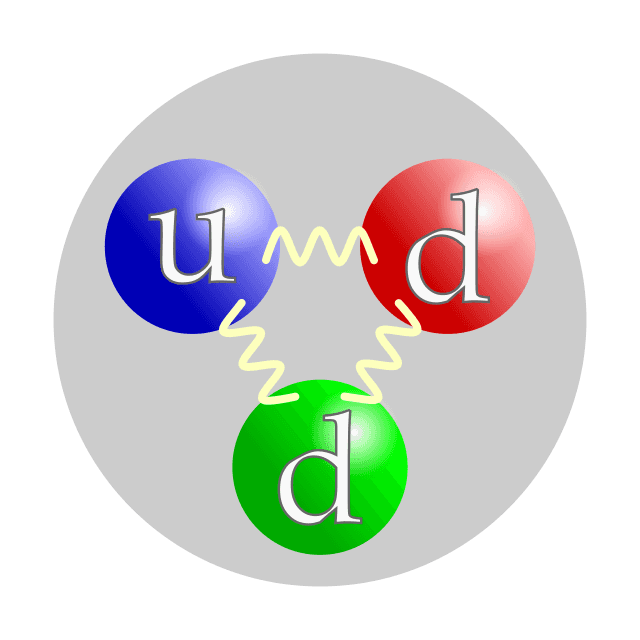The neutron, a subatomic particle residing in the atomic nucleus alongside protons, serves as a cornerstone of atomic structure and dynamics. Its role extends beyond mere presence; it significantly influences atomic stability, matter interactions, and various nuclear processes. Understanding the multifaceted nature of neutrons is crucial for comprehending both atomic theory and the broader implications for physics and chemistry.
1. Fundamental Properties of Neutrons
Neutrons are electrically neutral particles, which distinguishes them from their positively charged counterparts, protons. Each neutron has a mass slightly greater than that of a proton, approximately 1.008664 atomic mass units (amu). This subtle difference in mass plays a pivotal role in nuclear binding and decay processes. The neutron’s lack of charge allows it to permeate atomic structures without repulsion, influencing how nuclei bind together, particularly in larger atoms.
2. Stability of the Atomic Nucleus
The presence of neutrons is vital for the stability of the nucleus. In simple terms, protons repel each other due to electrical forces because they possess the same charge. Neutrons act as a mediating presence, contributing to the strong nuclear force that binds protons and neutrons together within the nucleus. This force counters the electromagnetic repulsion, creating a stable environment essential for the existence of the atom. The ratio of neutrons to protons, known as the neutron-to-proton ratio, is a critical factor in determining the stability of an isotope. An optimal ratio tends to foster stability, while deviations can lead to radioactive decay.
3. Isotopes and Nuclear Variability
Isotopes are variants of elements distinguished by differing neutron counts. While they share the same atomic number (i.e., the number of protons), their varying neutron counts impart unique nuclear characteristics. For instance, carbon-12 (6 protons and 6 neutrons) is stable, whereas carbon-14 (6 protons and 8 neutrons) is radioactive, undergoing beta decay. This underscores the neutrons’ integral role in defining an element’s isotopic identity and its stability. Understanding isotopic variations expands our knowledge of chemical properties and enhances applications ranging from radiocarbon dating to nuclear medicine.
4. Neutrons in Nuclear Reactions
Neutrons are pivotal in many nuclear reactions. Their ability to initiate reactions, such as fission and fusion, underpins many processes in both terrestrial and astrophysical environments. In nuclear fission, a heavy nucleus splits into two lighter nuclei upon absorption of a neutron, releasing a significant amount of energy. Conversely, in stellar fusion, hydrogen nuclei combine into helium, facilitated by the role of neutrons in overcoming electromagnetic repulsion at high temperatures and pressures prevalent in stars. This elucidates the neutron’s fundamental role as a catalyst in energy production, impacting both stellar life cycles and technological advancements, such as nuclear power generation.
5. Neutron Interaction with Matter
The interaction of neutrons with matter is another domain where their role is essential. Unlike charged particles, neutrons can penetrate materials without being deflected, making them valuable tools in various experimental and industrial applications. Neutron scattering techniques, such as neutron diffraction and spectroscopy, are employed to investigate the atomic and molecular structure of materials. These techniques furnish insights into crystallography, magnetic properties, and dynamic processes in solids and liquids, enhancing the fields of material science and condensed matter physics.
6. The Role of Neutrons in Nuclear Technology
Neutrons are central to the operation of nuclear reactors and the development of nuclear technologies. The design of nuclear reactors relies heavily on the chain reaction initiated by neutrons. Control rods, composed of materials that absorb neutrons, regulate the fission process, ensuring a stable energy output. Furthermore, neutrons play a crucial role in nuclear security and weaponry; the understanding of neutron behavior is essential in the design and maintenance of nuclear arms and safeguards against proliferation.
7. Neutron Stars and Astrophysics
Neutrons assume a profound significance beyond terrestrial applications, especially when examining the exotic structures of neutron stars. These celestial bodies, remnants of supernova explosions, are composed almost entirely of neutrons. The immense gravitational forces present in neutron stars result in an extraordinary state of matter wherein neutrons are densely packed, challenging our understanding of physics. Studying neutron stars offers insights into fundamental questions concerning gravity, quantum mechanics, and the behavior of matter under extreme conditions. They ultimately serve as natural laboratories for testing theoretical predictions and exploring the fundamental properties of matter and energy.
8. Conclusion: The Indispensable Neutron
In summary, the neutron’s role in atomic structure is profound and multifaceted. From ensuring the stability of the atomic nucleus to facilitating nuclear reactions and enriching our understanding of materials and cosmic phenomena, neutrons are indispensable components of modern physics and myriad applications. Their unique properties and interactions continue to inspire extensive research, rendering them a subject of paramount importance in both theoretical explorations and practical applications across various scientific disciplines.












